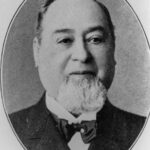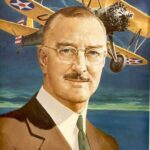Longhorn Cattle were introduced to the Americas by the Spanish between the 16th and 18th centuries. The cattle industry back then was primarily a small-scale industry. Beef was not very popular, so cattle were raised primarily for the value of their hides. Because there was no refrigeration, any cattle used for beef had to be delivered on the hoof to cities where the beef was to be consumed. The first cattle drives from Texas were to supply beef to San Francisco during the gold rush of the 1850s. The journey took over 6 months but proved to be profitable, since cattle that cost $5 to $10 in Texas were worth $20 in San Francisco.
During the first half of the 1860’s, demand for beef and leather during the civil war decimated the cattle industry in every state except for Texas, where the Longhorn continued to thrive. The nation’s economy was in ruins after the civil war, but Texas had over five million head of cattle. Unfortunately, there was no easy way to get the cattle to major population centers. That all changed with the introduction of the transcontinental railroad, which was completed in 1869. With the advent of the railroad, cattle could be loaded on rail-cars and transported thousands of miles to virtually any city in the US. The era of the cowboy was born.
Cattle drives from Texas followed the Goodnight-Loving, Western, Chisholm, or Shawnee trails to cities along the new transcontinental railroad. With the new-found wealth derived from the cattle industry, cities along the route prospered. They spawned support industries catering to the consumption of liquor, gambling, prostitution, and even the need for peace officers. But as the cattle industry grew, it attracted more and more people wanting to make their fortunes. Soon cattle became abundantly available, resulting in a dramatic drop in the price of beef, ultimately wiping out many an entrepreneurs’ hopes of cashing in on the new cattle industry. In business today this same history is repeated over and over again.
The phenomenon is sometimes referred to as a “Bubble”. A new industry is established, then sits and simmers until several seemingly unrelated events come together. Then the market explodes. Huge profits are made by the entrepreneur that can spot the trend early and be in a position to take advantage of it. As more and more people wanting their piece of the pie to enter the market and overproduce the product, they eventually drive down profits, driving out all but the most efficient businesses. Savvy entrepreneurs understand when to get in, how to become cost-effective, and when to get out.
How does the history of the cattle industry apply to your current or next business venture?












